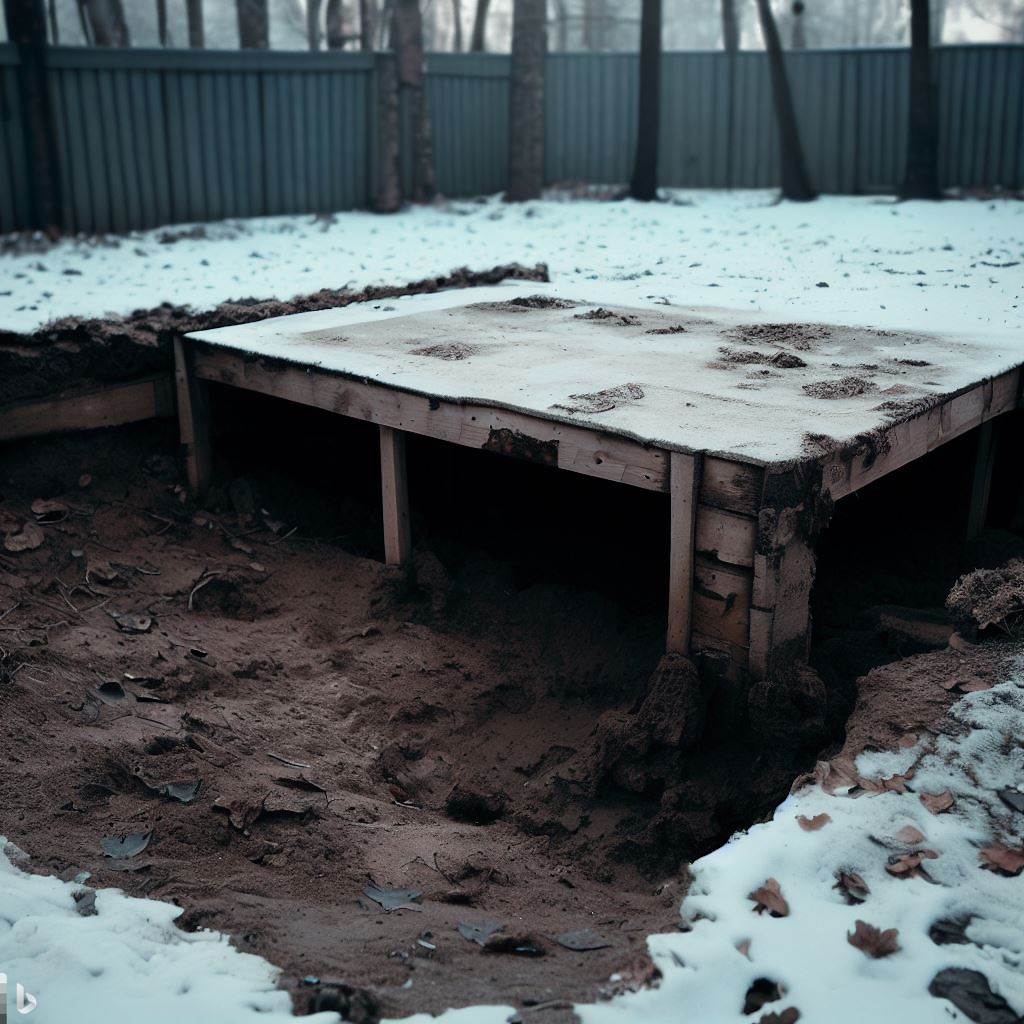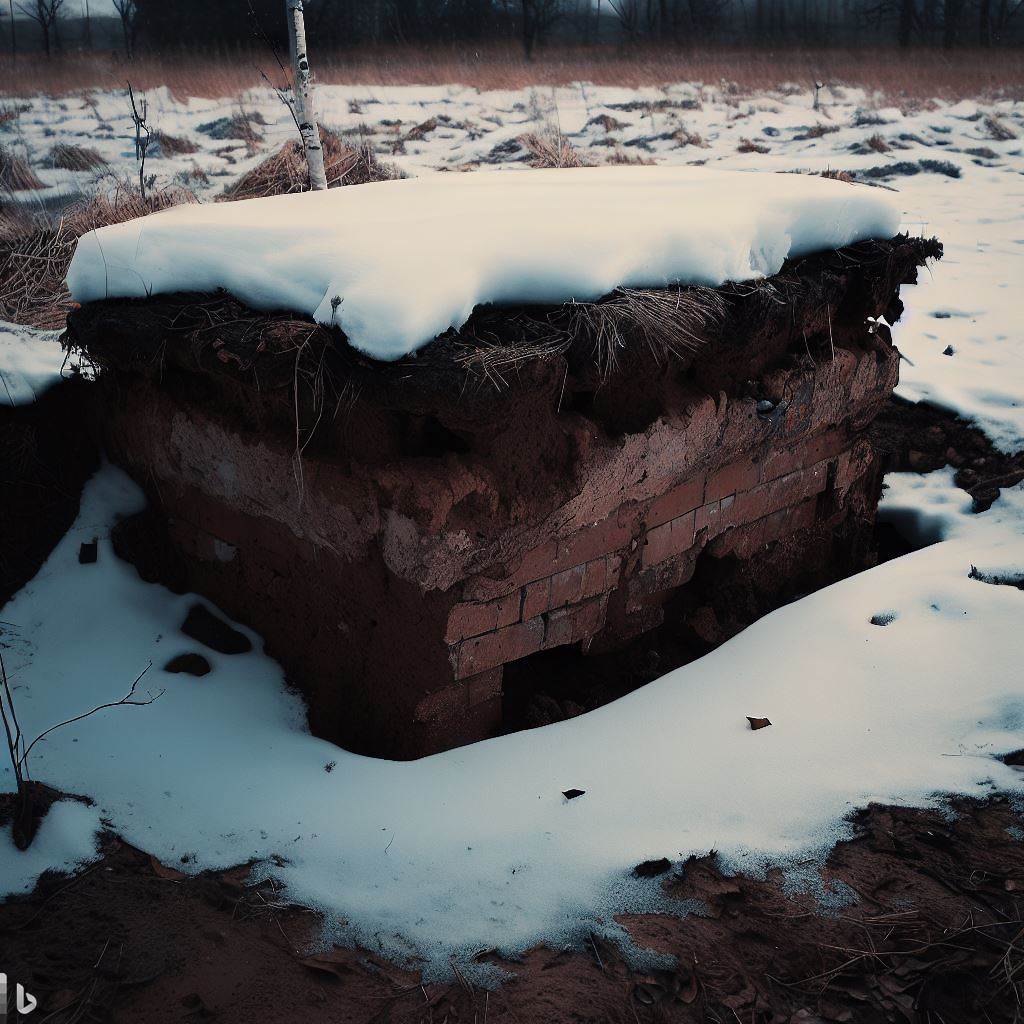Goodness gracious, isn’t winter a spectacle? The shimmering snowflakes pirouetting from the sky, transforming the mundane into a glittering wonderland.
However, beneath this sparkle lurks the bitter chill that could turn your foundation into an ice block—No homeowner wants to face that! But hey, let’s not panic just yet; we have time on our side.
What if I told you there was a way of making sure winter doesn’t wreak havoc on your home’s foundation? Yes indeed! We’re going to delve deep into preventative measures and how they can help keep one of the most critical parts of your home intact during these frigid months ahead. So grab your hot cocoa and cozy up!
Here is an exciting article you might be interested in manufactured home on basement
Another article for you muck eater for ponds

Potential Risks of Leaving a Foundation Exposed Over Winter
Winter can be harsh on your home, especially if you neglect to protect your foundation. When you leave your foundation exposed during the cold months, it becomes vulnerable to various risks that can lead to costly repairs. Let’s explore some of these potential dangers.
One major risk is frost damage. As temperatures drop below freezing, moisture in the ground around your foundation can freeze and expand.
This expansion exerts pressure on the concrete, causing cracks and weakening the structure over time. These cracks not only compromise the stability of your foundation but also pave the way for water infiltration.
Another risk is related to freeze-thaw cycles. In regions with fluctuating temperatures, such as many parts of North America, freeze-thaw cycles are common during winter.
When water penetrates small openings in an exposed foundation and subsequently freezes and thaws repeatedly, it exacerbates existing cracks or creates new ones due to expanding ice.
Snow and ice accumulation also pose significant threats to an unprotected foundation. Snow buildup against the side of a house exposes its foundations to prolonged moisture contact when it melts slowly over time or seeps into any existing crevices.
It’s vital to understand how these risks affect an unprotected foundation so that appropriate preventive measures can be taken before winter arrives.
How Cold Weather Can Affect an Unprotected Foundation
Cold weather has detrimental effects on an unprotected building foundation due primarily to frost action and temperature fluctuations.
Impact of Freeze-Thaw Cycles on Exposed Foundations
The repeated freezing and thawing process known as “freeze-thaw cycles” poses one of the biggest threats to an exposed building foundation during winter months.
When water seeps into small cracks and crevices within the concrete, it expands as it freezes.
This expansion exerts pressure on the surrounding concrete and exacerbates existing cracks or creates new ones. Over time, this can weaken the foundation’s structural integrity.
The damage caused by freeze-thaw cycles is not limited to visible cracks; it can also affect the reinforcement bars inside the foundation. The expanding ice can push against these bars, leading to their corrosion and further weakening of the foundation.
Role of Insulation in Protecting Foundations during Winter
Insulation plays a crucial role in protecting foundations from cold weather damage. By insulating your exposed foundation, you create a barrier that prevents heat loss from your home and reduces temperature fluctuations that promote freeze-thaw cycles.
Insulating materials such as rigid foam boards or spray foam insulation should be applied around the exterior of your foundation walls to provide an extra layer of protection.
These materials help regulate temperature changes by reducing heat transfer through conduction, preventing potential cracking due to frost action.
Additionally, proper insulation helps maintain consistent indoor temperatures throughout winter which fosters a healthier living environment while reducing energy costs.
Effect of Snow and Ice Accumulation on Building Foundations
While snow may seem harmless when it beautifully blankets your surroundings, its accumulation against an unprotected building foundation can spell trouble for homeowners during winter months.
Methods to Safeguard Your Foundation from Cold Climate Damage
Fortunately, there are several methods you can employ to safeguard your foundation from cold climate damage during winter months:
1. Clear snow away: Regularly remove accumulated snow around your home’s perimeter using a shovel or snow blower.
2. Create proper drainage: Ensure that downspouts are effectively directing water away from your house and its foundations.
3. Install gutter guards: These prevent leaves and debris from clogging gutters which could cause water overflow onto foundations when melting occurs.
4. Install heat cables: Heat cables, when properly installed along the roof’s edge and gutters, can prevent ice dams from forming and reduce water seepage.
5. Apply waterproof coatings: Waterproof coatings can be applied to exposed foundation walls as an added layer of protection against moisture infiltration.
Best Practices for Maintaining an Exposed Foundation in Winter
To maintain your exposed foundation during winter months, follow these best practices:
1. Monitor for cracks or damage regularly.
2. Seal any existing cracks with appropriate products recommended by professionals.
3. Keep gutters clean and free of debris to prevent blockages that could lead to overflowing water reaching your foundation.
4. Maintain proper grading around your home to ensure water flows away from the foundation rather than toward it.
5. Consider installing a drainage system around your foundation if you live in an area prone to excessive moisture.

Cost Implications of Repairs Caused by Exposure to Winter Conditions
Repairs caused by exposure to winter conditions on an unprotected building foundation can be expensive. The cost depends on factors such as the severity of the damage and the extent of repairs required.
Repairing minor cracks may range from a few hundred dollars, while significant structural repairs or complete replacement could potentially cost thousands or more.
Conclusion
Protecting your home’s foundation during winter is crucially important due to potential risks linked with frost action, freeze-thaw cycles, snow accumulation, and ice formation against exposed foundations.
Utilizing insulation methods like rigid foam boards paired with proactive maintenance measures will help safeguard your investment while reducing potential repair costs caused by winter weather-induced damages
If you found this article exciting, this another great read my bell peppers are small
We also found this great pick for you my pepper plants are not growing
FAQs On leaving a foundation exposed over winter
Q: Can I pour a concrete foundation in the winter?
A: Yes, it is possible to pour a concrete foundation in the winter, but it requires special precautions and the expertise of a contractor experienced in working in cold weather conditions.
Q: How do I prevent damage to my concrete foundation over the winter?
A: To prevent damage to your concrete foundation over the winter, it is important to take steps such as properly backfilling and compacting the soil around the foundation, ensuring proper drainage, and protecting the exposed concrete walls and footings.
Q: Should I hire an expert to pour the foundation in winter?
A: Yes, it is highly recommended to hire an expert contractor who has experience in pouring concrete foundations in winter. They have the knowledge and skills to handle the challenges that come with cold weather conditions and ensure a successful pour.
Q: Can I pour a basement slab in the winter?
A: Yes, you can pour a basement slab in the winter. However, it is important to take extra measures to prevent it from freezing, such as using insulation and heating equipment, and following the proper curing process.
Q: What should I do if I live in a region where it gets very cold in winter?
A: If you live in a region where it gets very cold in winter, it is important to take extra precautions to protect your concrete foundation. This may include using insulation, heating equipment, and covering the foundation with materials like hay or straw to provide extra insulation.
Q: Can I leave my exterior walls uncovered over the winter?
A: It is not recommended to leave your exterior walls uncovered over the winter. Exposed concrete can be vulnerable to the effects of freezing and thawing, which can lead to cracks and other damage. It is best to protect the walls with coverings or insulating materials.
Q: How can I prevent my basement floor from heaving in the winter?
A: To prevent your basement floor from heaving in the winter, it is important to ensure proper backfilling and compaction of the soil around the foundation. This helps to create a stable base that can withstand the effects of freezing and thawing. Additionally, using proper drainage and insulation can also help prevent heaving.
Q: Can I pour the foundation without a contractor?
A: Pouring a foundation without the help of a contractor is not recommended unless you have extensive knowledge and experience in construction. Pouring a foundation requires specialized equipment, expertise, and proper techniques to ensure a strong and stable foundation.
Q: What are the risks of pouring a foundation in winter without proper precautions?
A: Pouring a foundation in winter without taking proper precautions can lead to several risks. The concrete may not cure properly, resulting in reduced strength and durability. It may also be more susceptible to cracking and damage due to freezing and thawing. Additionally, the ground may shift and settle unevenly, causing structural issues.
Q: Can I use a DIY method to prevent damage to my foundation over winter?
A: While there are some small DIY steps you can take to protect your foundation, it is still recommended to consult with an expert contractor. They have the knowledge and experience to assess the specific needs of your foundation and ensure the best methods are employed to prevent damage during the winter months